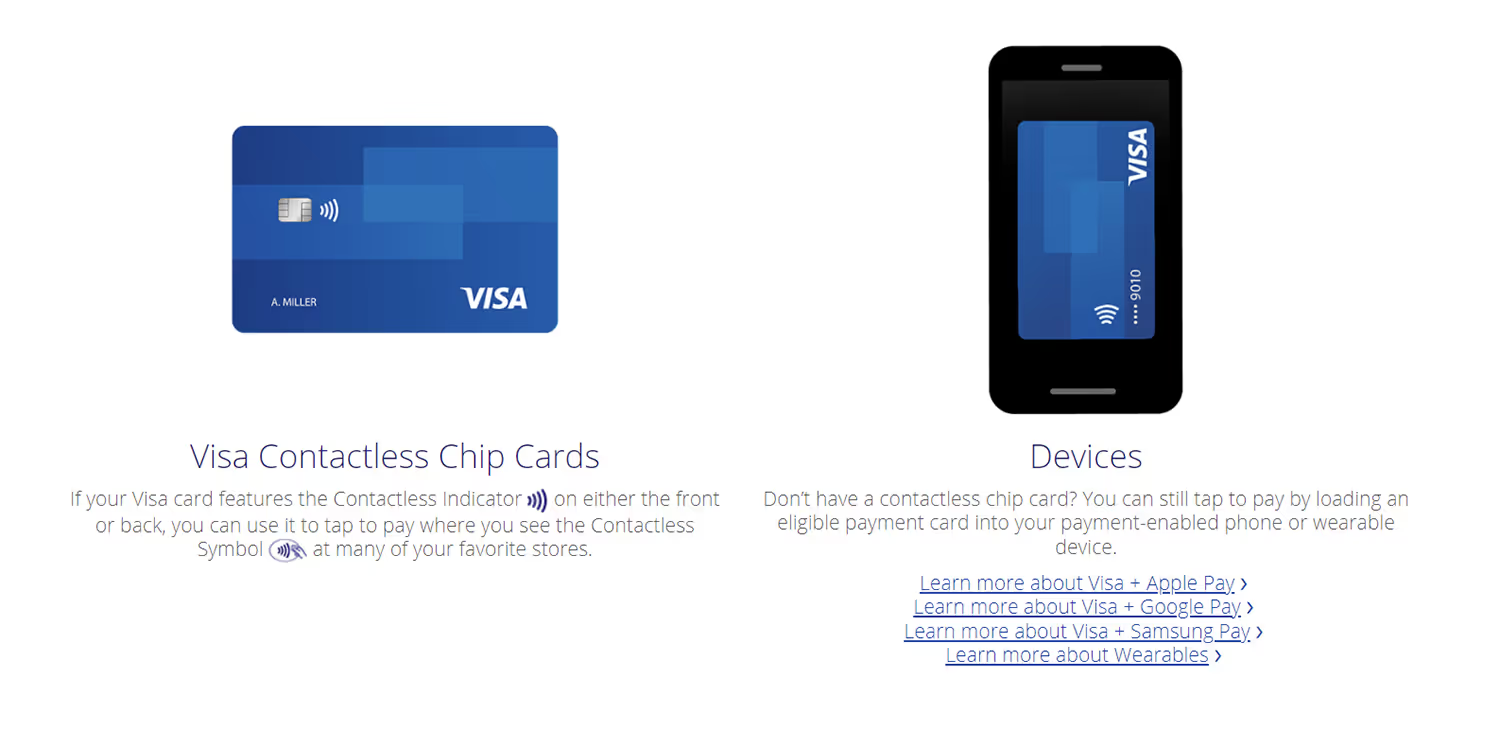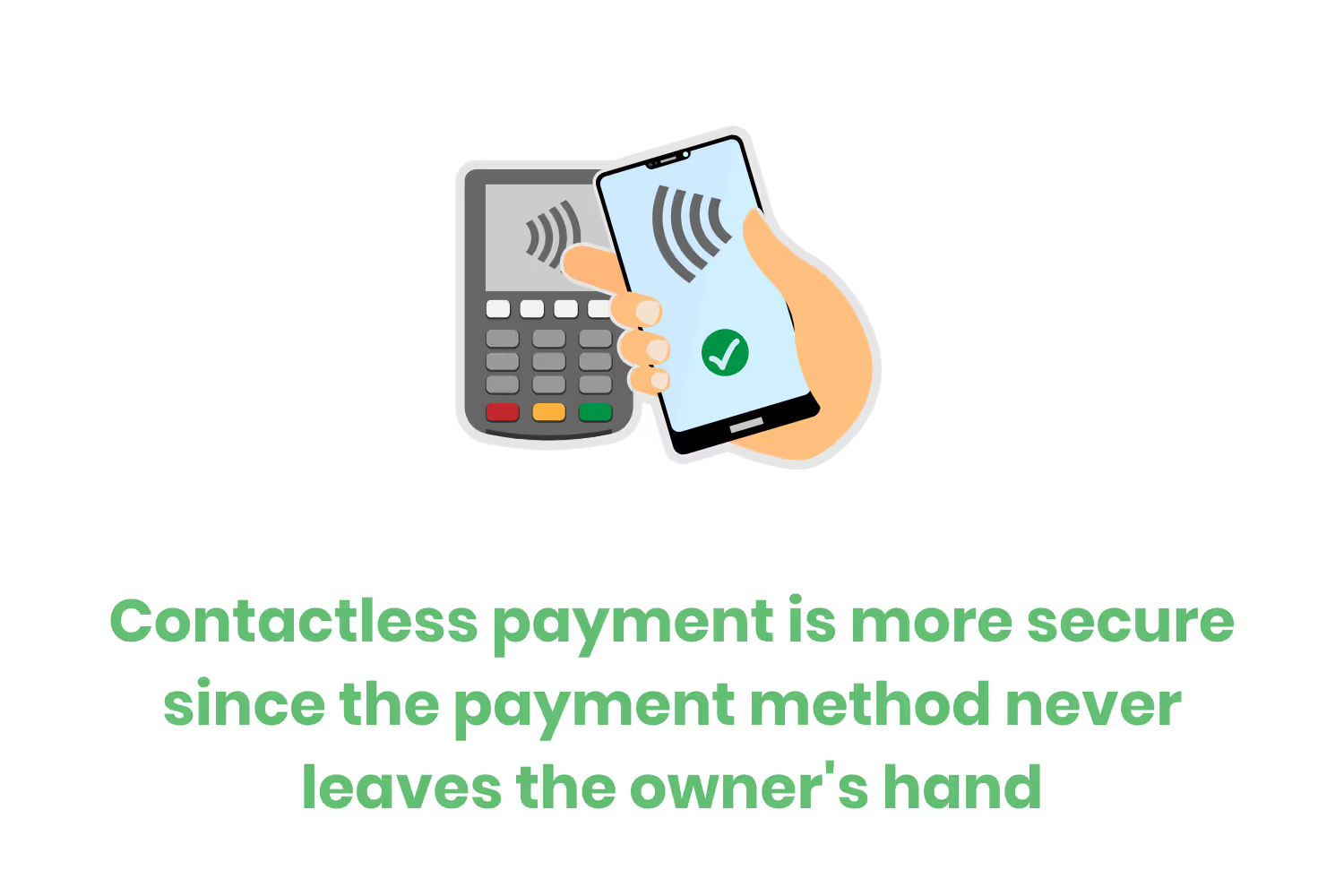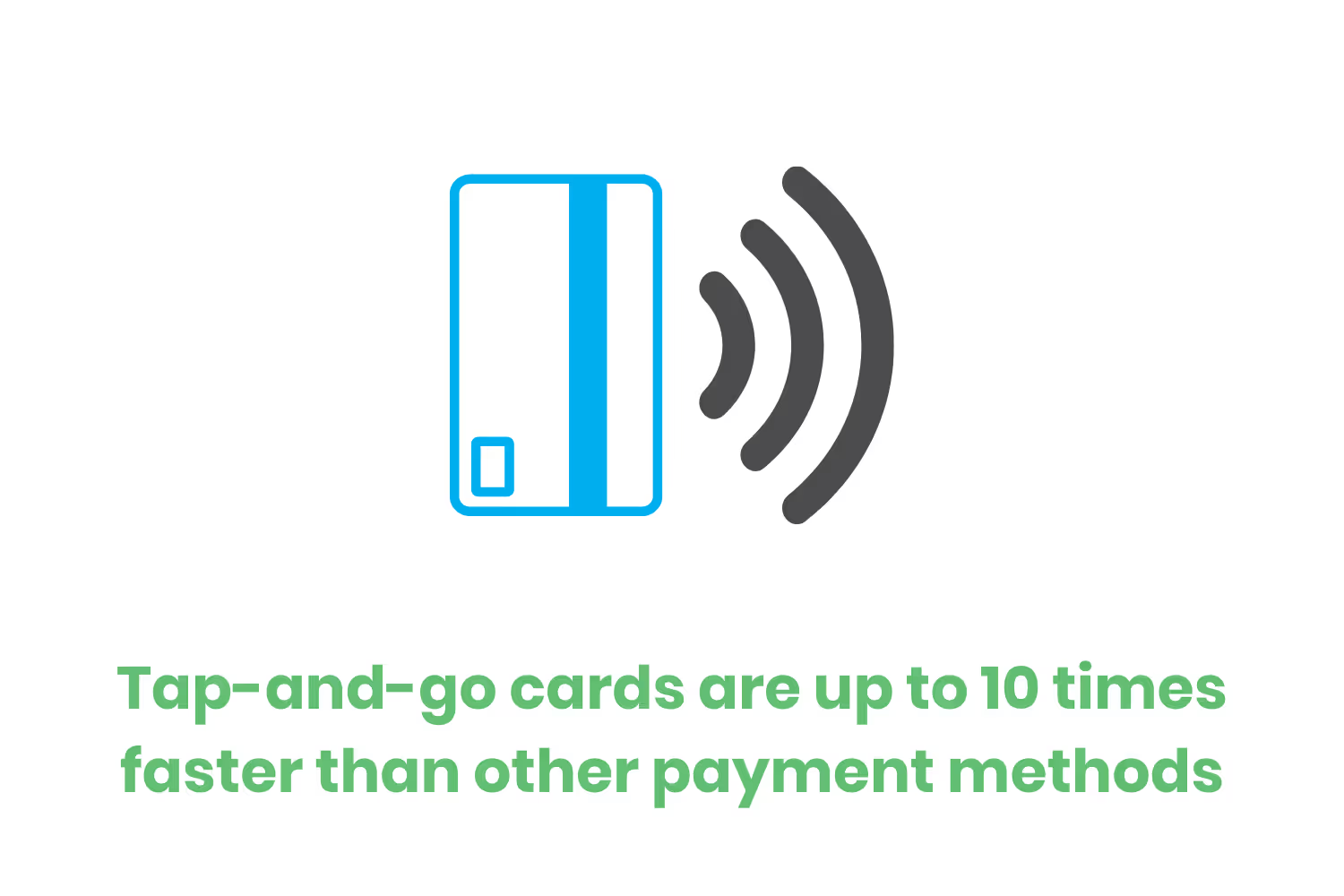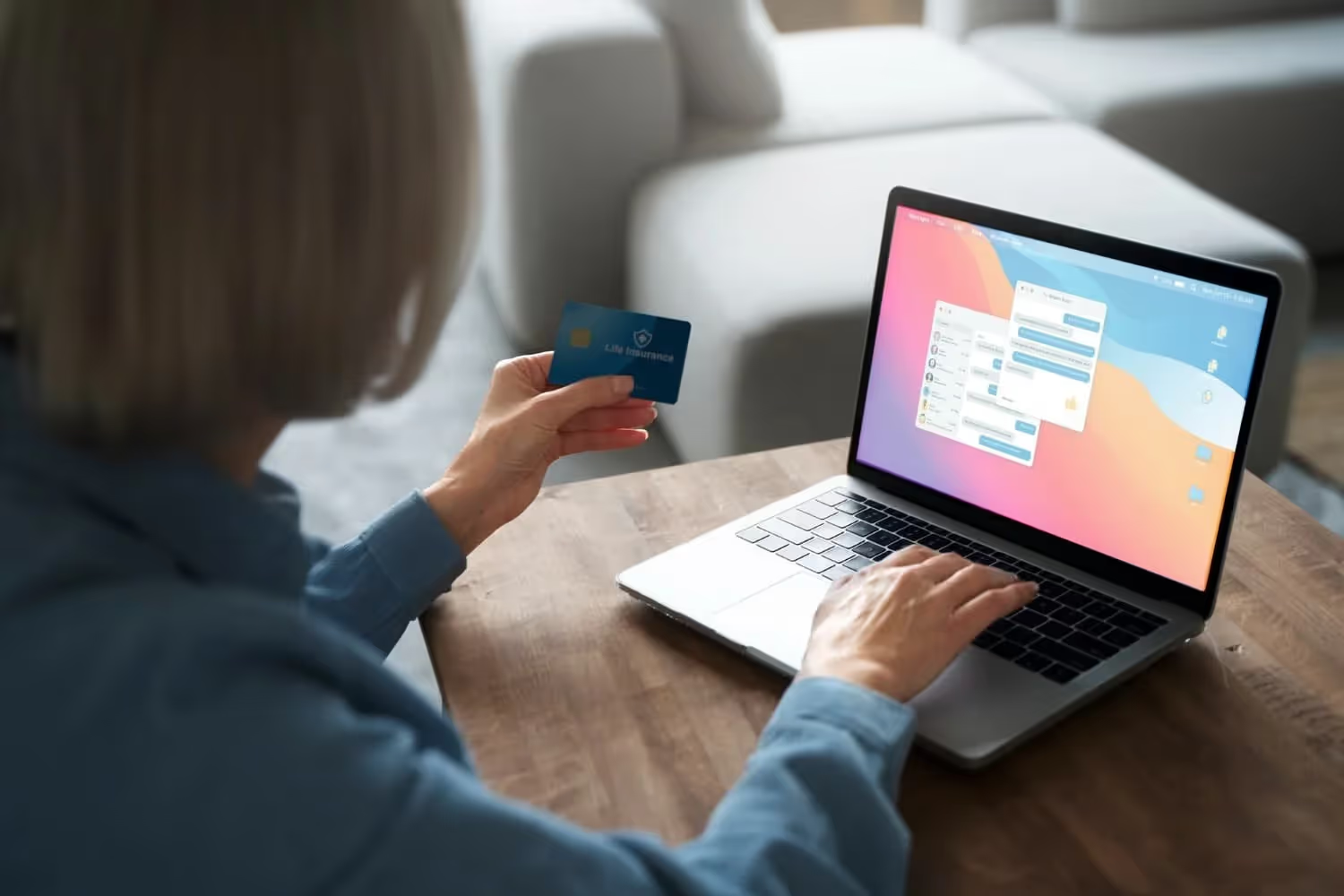Contactless Payment Technologies: A Business's Guide to Simple Payment Options
As people face issues with payment methods, they aim to find new options. After all, why continue to suffer from the same pain points? To fix some of these problems, there’s already a promising solution: contactless payment.

Of the top five items that people lose, wallets make the list. A survey from MoneyTips found that 62% of people either lost their wallets or had them stolen. You might not lose your whole wallet either, but rather just a specific card out of it. Maybe you left it at the last place you swiped it, such as on the restaurant table after your server returned it to you.

Regardless of how it happens, losing or having your payment options stolen is a major problem. How would you purchase something? Is someone going to take your cards on a spending spree?
Financial security isn’t the only potential concern, either. People also need to consider physical cleanliness. We know that cash is filthy and covered in germs. I can feel the grime on a dollar bill or handful of coins just thinking about it. But we don’t always consider the cleanliness of our credit and debit cards. A study by LendEDU found that credit and debit cards are dirtier than cash. This would be unsettling for someone if they….oh, I don’t know, ended up in a pandemic.
As people face issues with payment methods, they aim to find new options. After all, why continue to suffer from the same pain points? To fix some of these problems, there’s already a promising solution: contactless payment.
Consumers aren’t the only ones who need to focus on switching the way that they pay for goods and services. Businesses also need to make the shift to accept these methods. So as a business, what should you consider? In this blog, we’ll go over everything you need to know about contactless payment technologies at your organization.
What is Contactless Pay?
Contactless pay is exactly what it sounds like: paying for a good or service, without initiating contact between the vendor and customer by touching the form of payment. There’s no more passing a card back and forth, punching in a PIN, or following prompts on a card reader.
Instead, these are wireless transactions where the customer authorizes payment by holding a security token near the vendor’s terminal. These tokens are in the form of a tap-and-go credit or debit card, mobile device, or wearable technology. We’ll touch more on these options in a bit.

The point of contactless pay is to provide a secure, convenient, and quick option for both the customer and vendor. There are fewer steps involved at the time of the transaction, streamlining the process for everyone. Now that you understand what it is, let’s look at some of those different contactless methods.
Different Technology Options
To offer contactless payment to your customers, you need to know what options are available for you to implement.
I mentioned that one of the challenges with transactions involves passing cards back and forth between the customer and vendor. This increases the chance of a lost card, spreads germs, and takes up more time as the customer follows the prompts on the card reader.
It seems like it wasn’t that long ago that we switched from swiping our cards to inserting them into a chip reader. But we’ve already moved on from that as more people are using tap-and-go cards. These have a Contactless Indicator symbol. Card readers will also have this symbol if they’re compatible with this type of transaction. The payment terminal emits an electromagnetic field so that when the card is in range, it can communicate with it to collect money.
Okay, but what if your wallet ends up lost, stolen, or forgotten? If your card was in it, then this form of payment doesn’t solve that problem. That’s where mobile and wearable technology comes in.
Now, customers can also load their credit or debit cards onto a payment-enabled device such as their smartphones. Apple Pay, Google Pay, and Samsung Pay are all options depending on the type of smartphone that the person has. With these, the same concept applies to the tap-and-go card. If there’s a Contactless Indicator at the terminal, they use their device’s wallet by holding the device near the card reader.
Other options with mobile and wearable devices involve using a QR code. Besides a smart device’s wallet app, there are other apps that users can download themselves. Some popular platforms are Venmo and PayPal. They may also download an app that’s specific to the retailer which has its own wallet platform.
The users add their card or bank account information to their account so that they can send payments directly with the app. They get a unique QR code linked to their account that the business can scan to collect payment. Or, a business can provide its unique code for the consumer to scan. Either way, the business collects money through the app’s QR code capabilities.
Benefits of Contactless Payment
By now, you’re probably starting to see the attractiveness of these contactless payment technologies. Let’s run through some of the benefits in more detail.
Security
I feel like I’m repeating myself, but these options are safer because there’s less of a risk for a stolen or lost card/device. When people use contactless payment, their card or smart device never leaves their hand.

When using smart devices for payment, there are even more security benefits. First of all, the person wouldn’t even need to carry their credit cards in their wallet. So if it did get stolen, the thief wouldn’t benefit financially.
Although, phones are also on the list of the top five items that are most commonly lost or stolen. Doesn’t that still pose a threat? When it comes to payment, not so much. If you lost your wallet, anyone could use your credit cards that don’t require a PIN to make a purchase.
But smart devices use biometrics like fingerprint or facial recognition to access them. Even if users don’t have a passcode on their device, these payment apps still rely on these biometrics. That way, they won’t authorize payment without the owner’s fingerprint or facial recognition. So if their phone gets lost or stolen, no one can pay using their phone since they can’t authorize the app to pay.
Sanitation
This benefit is fairly self-explanatory. Just think about it. If your card only ever stays in your hand and it doesn’t touch the payment terminal, then it would only have your germs on it. This is unlike typical methods like passing cash back and forth or handing over your card for the vendor to swipe.
Earlier I mentioned the study from LendEDU that found that credit cards carried more germs than cash. The researchers used Hygiena's SystemSure Plus Handheld testing device to test 41 payment cards for germs. These had average germ scores of 285 compared to 160 for dollar bills and 136 for coins. The higher scores indicate more bacteria.

But germs aren’t only on the source of payment. They also exist on the buttons on the card reader. Any time buyers have to punch in a PIN or press “accept” or “decline,” they also pick up germs from previous customers.
During a time like the COVID-19 pandemic, it was obvious why contactless options were the better choice. If the opportunity to limit spreading germs was available, businesses would implement it.
Speed
With contactless methods, transactions last only a few seconds. EMV (Europay, Mastercard, and Visa) chip technology came to the US in 2014 to 2015. These provided more security than magnetic stripes against fraudsters since they have an embedded computer chip that creates a one-time code for each transaction.
Yet within a few years, we’ve already moved on to tap-and-go functionality. It uses the same processes as EMV transactions, but it’s significantly faster. Contactless transactions take between 13 and 15 seconds, compared to 30 seconds for an EMV transaction. That’s at least half the amount of time. Forbes says that they’re even up to 10 times faster than other methods. You can imagine how much of a relief it would be for the person in the back of a long line if the process was that much quicker.

Convenience
It’s more convenient for customers to have these quick options. Younger people even choose businesses based on if their features are convenient and save time. It’s a no-brainer why it would be practical for anyone to have fast services. In fact, these tap-and-go features are a “table stakes” need for 38% of consumers.
But it’s also nice when people don’t need to carry their wallets on them. It saves them the hassle when they forget their wallet or purse at home if they can still pay with their smart device. They can even intentionally leave them at home since they know they still have the option to pay from their phone.
How Many People Use Them
Because of all these benefits for both the customer and business, so many people have transitioned to using contactless payment technologies. I mean, why wouldn’t someone want a faster, safer, and more sanitary option?
The COVID-19 pandemic was one of the driving forces behind this transition. 46% of all consumers worldwide switched out their top-of-wallet card for one with contactless capabilities.
But this trend continues to increase. Almost three-quarters of people said they will stick to contactless payment technologies even after the pandemic. These types of transactions may triple from $2 trillion to $6 trillion between 2020 and 2024 globally. In the US, that would be an increase from $178 billion to $1.5 trillion.

Since there’s no sign that contactless methods will be slowing down, it’s even more necessary that vendors offer them. This will make them more attractive as a business to their customers.
Conclusion
The financial industry is constantly evolving to keep up with modern-day trends and consumer preferences. Even within a few years, we’ve already switched from popular chip cards to tap-and-go methods.
Businesses are constantly looking for new ways to improve the customer experience so that they’re more satisfied. As so many people switch to using these contactless payment technologies, companies have to keep up.
Consumers see these options as a need by the businesses they choose. After all, they offer security and convenience, save time, and are a more sanitary choice. Everyone can appreciate the benefits of this functionality since anyone with a tap-to-go card or smart device can use them.
So the next time you also forget your wallet, you can be thankful that you still have a way to pay.
Emphasize your product's unique features or benefits to differentiate it from competitors
In nec dictum adipiscing pharetra enim etiam scelerisque dolor purus ipsum egestas cursus vulputate arcu egestas ut eu sed mollis consectetur mattis pharetra curabitur et maecenas in mattis fames consectetur ipsum quis risus mauris aliquam ornare nisl purus at ipsum nulla accumsan consectetur vestibulum suspendisse aliquam condimentum scelerisque lacinia pellentesque vestibulum condimentum turpis ligula pharetra dictum sapien facilisis sapien at sagittis et cursus congue.
- Pharetra curabitur et maecenas in mattis fames consectetur ipsum quis risus.
- Justo urna nisi auctor consequat consectetur dolor lectus blandit.
- Eget egestas volutpat lacinia vestibulum vitae mattis hendrerit.
- Ornare elit odio tellus orci bibendum dictum id sem congue enim amet diam.
Incorporate statistics or specific numbers to highlight the effectiveness or popularity of your offering
Convallis pellentesque ullamcorper sapien sed tristique fermentum proin amet quam tincidunt feugiat vitae neque quisque odio ut pellentesque ac mauris eget lectus. Pretium arcu turpis lacus sapien sit at eu sapien duis magna nunc nibh nam non ut nibh ultrices ultrices elementum egestas enim nisl sed cursus pellentesque sit dignissim enim euismod sit et convallis sed pelis viverra quam at nisl sit pharetra enim nisl nec vestibulum posuere in volutpat sed blandit neque risus.

Use time-sensitive language to encourage immediate action, such as "Limited Time Offer
Feugiat vitae neque quisque odio ut pellentesque ac mauris eget lectus. Pretium arcu turpis lacus sapien sit at eu sapien duis magna nunc nibh nam non ut nibh ultrices ultrices elementum egestas enim nisl sed cursus pellentesque sit dignissim enim euismod sit et convallis sed pelis viverra quam at nisl sit pharetra enim nisl nec vestibulum posuere in volutpat sed blandit neque risus.
- Pharetra curabitur et maecenas in mattis fames consectetur ipsum quis risus.
- Justo urna nisi auctor consequat consectetur dolor lectus blandit.
- Eget egestas volutpat lacinia vestibulum vitae mattis hendrerit.
- Ornare elit odio tellus orci bibendum dictum id sem congue enim amet diam.
Address customer pain points directly by showing how your product solves their problems
Feugiat vitae neque quisque odio ut pellentesque ac mauris eget lectus. Pretium arcu turpis lacus sapien sit at eu sapien duis magna nunc nibh nam non ut nibh ultrices ultrices elementum egestas enim nisl sed cursus pellentesque sit dignissim enim euismod sit et convallis sed pelis viverra quam at nisl sit pharetra enim nisl nec vestibulum posuere in volutpat sed blandit neque risus.
Vel etiam vel amet aenean eget in habitasse nunc duis tellus sem turpis risus aliquam ac volutpat tellus eu faucibus ullamcorper.
Tailor titles to your ideal customer segment using phrases like "Designed for Busy Professionals
Sed pretium id nibh id sit felis vitae volutpat volutpat adipiscing at sodales neque lectus mi phasellus commodo at elit suspendisse ornare faucibus lectus purus viverra in nec aliquet commodo et sed sed nisi tempor mi pellentesque arcu viverra pretium duis enim vulputate dignissim etiam ultrices vitae neque urna proin nibh diam turpis augue lacus.




